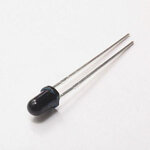rajaram04
Advanced Member level 3

- Joined
- Jun 17, 2012
- Messages
- 871
- Helped
- 6
- Reputation
- 12
- Reaction score
- 5
- Trophy points
- 1,298
- Location
- earth
- Activity points
- 7,687
Hello sir
with normal designings for transformerless power supply i desined so many circuits & got brilliant results for red white blue green LEDs but with same power supply i am unable to drive an IR LED to the full . . i am getting too much weak IR rays unable for a detector to detect it , i need this kind of IR LED operation for my personal experiments so please help . .. thanks
this basic type arrangment i am using

just in place of 820k resistor i am using 1 meg & rest diagram is same
but unable to drive IR LED with 47k resistor in series with it . .please help thanks
IR LED i am using

with normal designings for transformerless power supply i desined so many circuits & got brilliant results for red white blue green LEDs but with same power supply i am unable to drive an IR LED to the full . . i am getting too much weak IR rays unable for a detector to detect it , i need this kind of IR LED operation for my personal experiments so please help . .. thanks
this basic type arrangment i am using

just in place of 820k resistor i am using 1 meg & rest diagram is same
but unable to drive IR LED with 47k resistor in series with it . .please help thanks
IR LED i am using




